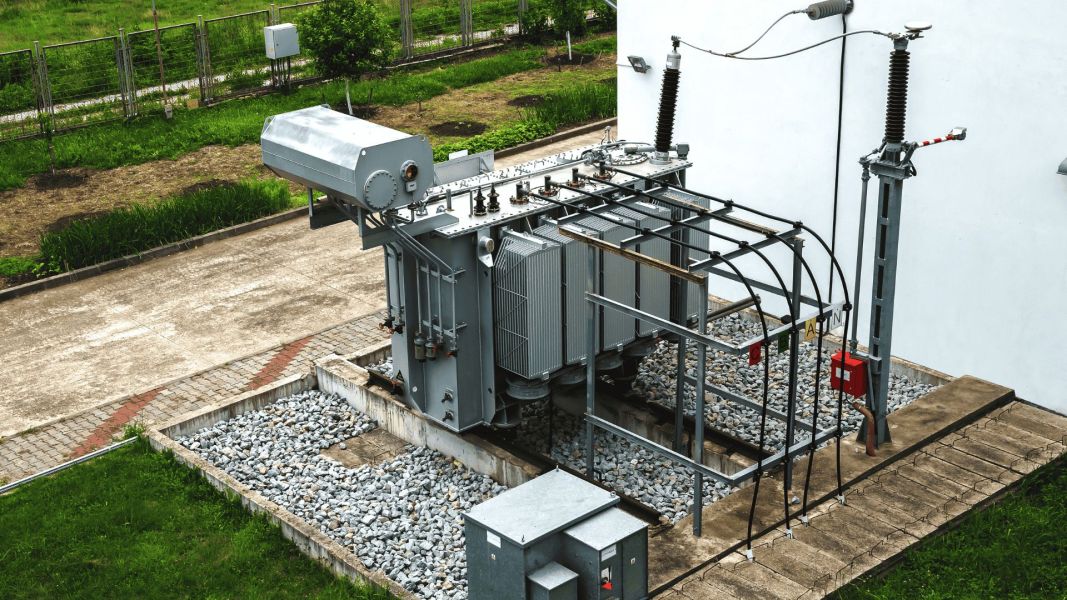Transformers are the silent backbone of our power distribution systems. When they fail, the consequences can be devastating, causing downtime, equipment damage, and safety hazards. Whether you’re running a giant factory or a hospital, understanding why transformers fail is crucial for preventing costly disruptions. Here’s a look at the most common causes of transformer failure along with actionable strategies you can use to keep your systems running.

The risk factors that make transformer failure inevitable
Although they can be unexpected, transformer failures don’t happen out of nowhere. They’re usually the result of issues that were either ignored or brushed off as harmless.
Here are several preventable factors that frequently contribute to transformer failure:
- Improper environments. Transformers installed in high-moisture or corrosive environments without proper protection will fail sooner or later.
- Cheap insulation. Not all insulation materials are equal, and cheap insulation never lasts. It doesn’t take much for poor insulation to cause total failure.
- Skipped or deferred maintenance. Transformers require regular maintenance and inspections. Skipping this important step is like never changing the oil in your car.
- Natural disasters and extreme weather. Floods, lightning strikes, hurricanes, and fallen trees can all damage transformers, especially when they’re not protected from the elements.
- Using the wrong unit. A transformer should be able to handle your load requirements. Otherwise, it will overheat over time and eventually fail.
- Inadequate cooling systems. Transformers generate a lot of heat, and the insulation is just one aspect of managing that heat. The entire cooling system needs to be high-quality because excessive heat breaks down insulation and shortens the lifespan of a transformer.
- Poor construction. Failure often occurs when manufacturers use substandard materials, poor winding techniques, and shortcuts. According to research, defects in design, manufacturing, material, and installation make up over 34% of all transformer failures.
How to prevent transformer failure
Transformer failures can be catastrophic and dangerous. You don’t want to be standing near a transformer when it explodes or catches on fire. With that said, most transformers are installed away from areas full of people, but they can still cause serious property damage. However, property damage is the least of your worries. If your transformer fails, the downtime can significantly harm your business.
A good transformer should last between 30-50 years, and thankfully, there are ways to prevent premature failure.
Invest in a high-quality transformer
First and foremost, source your transformer from a manufacturer with a reputation for building units that last. You can’t afford to go cheap. If you buy a cheaply made transformer, you can expect it to cause problems and randomly fail.
Choose the best insulation
When you’re looking for a dry-type transformer, pay close attention to the materials used for insulation. For example, PVC, ordinary paper, non-treated wood, low-grade plastics, rubber, and untreated cloth all make poor insulation. On the other hand, Nomex is an exceptionally effective insulation material.
Constant exposure to high temperatures accelerates insulation breakdown, which reduces a transformer’s performance. The better your insulation is from the start, the longer your transformer will last.
Perform routine maintenance
Whether you have an oil-filled transformer or a dry-type, regular maintenance is a must. For oil transformers, you’ll need to test the oil regularly and replace it when needed. Oil that becomes contaminated with moisture and acid can impair heat transfer and reduce its dielectric strength.
Perform repairs immediately
Deferred maintenance is a guaranteed ticket to transformer failure. Don’t let small issues go unaddressed. For example, leaks, unusual noises, excessive vibration, and minor overheating are all warning signs you should never ignore. If you allow even small issues to fester, they will eventually turn into bigger, costly problems.
Avoid overloading your transformer
Never run a transformer above its rated capacity. An overloaded transformer generates excessive heat and shortens its lifespan. Constant overloading can also deform the windings, which increases the risk of short circuits that can further damage your transformer.
Be proactive
There are some dangers you can’t predict, like heavy storms, fallen trees, and lightning strikes, but it’s possible to protect your transformer from these and other potential risks. Assess the individual needs of your environment before installing your transformer. For instance, you might need an enclosure with extra protection to keep moisture or salt spray out.
You’ll also want to have surge protection to avoid catastrophic failure in case of a lightning strike. It may never happen, but if it does, you’ll be glad you had protection.
Protecting your transformer protects your business
Transformer failures can be sudden, costly, and devastating, but they’re often preventable. By investing in a high-quality unit, performing regular maintenance, and making necessary repairs, you can extend the life of your transformer and keep your operations running.

Founder Dinis Guarda
IntelligentHQ Your New Business Network.
IntelligentHQ is a Business network and an expert source for finance, capital markets and intelligence for thousands of global business professionals, startups, and companies.
We exist at the point of intersection between technology, social media, finance and innovation.
IntelligentHQ leverages innovation and scale of social digital technology, analytics, news, and distribution to create an unparalleled, full digital medium and social business networks spectrum.
IntelligentHQ is working hard, to become a trusted, and indispensable source of business news and analytics, within financial services and its associated supply chains and ecosystems












